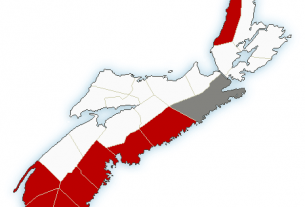**** Info via Environment Canada
It’s 2 February, and you know what that means: Bear Day!
Wait, what?

When Europeans settled in North America, they brought with them the folklore that if a hibernating animal emerged on Candlemas Day – 2 February – and saw its shadow, it would retreat into its den, and winter would last four or six weeks longer. In nineteenth-century Canada, our animal of choice became the bear. A famed hibernator, it was common across the country, and its size made it easy to observe – and worth observing.
But in the United States, it was the groundhog (aka, woodchuck) that took root. The term “Ground-hog Day” appeared in the mid-1800s and by the end of the century was “celebrated”, if that is the correct term, as a grand day of portent across that nation.
Canadians of the early 1900s were confused as to why some would associate the day with bears and others with groundhogs. Because they had no memory of how the tradition had come to be, they did not defend the potential use of the Canadian bear over the American groundhog on patriotic grounds. Thanks to creeping cultural conformity, within just a couple of decades the American version of “Groundhog Day” had swept the Canadian one away.
Happy Bear Day!



